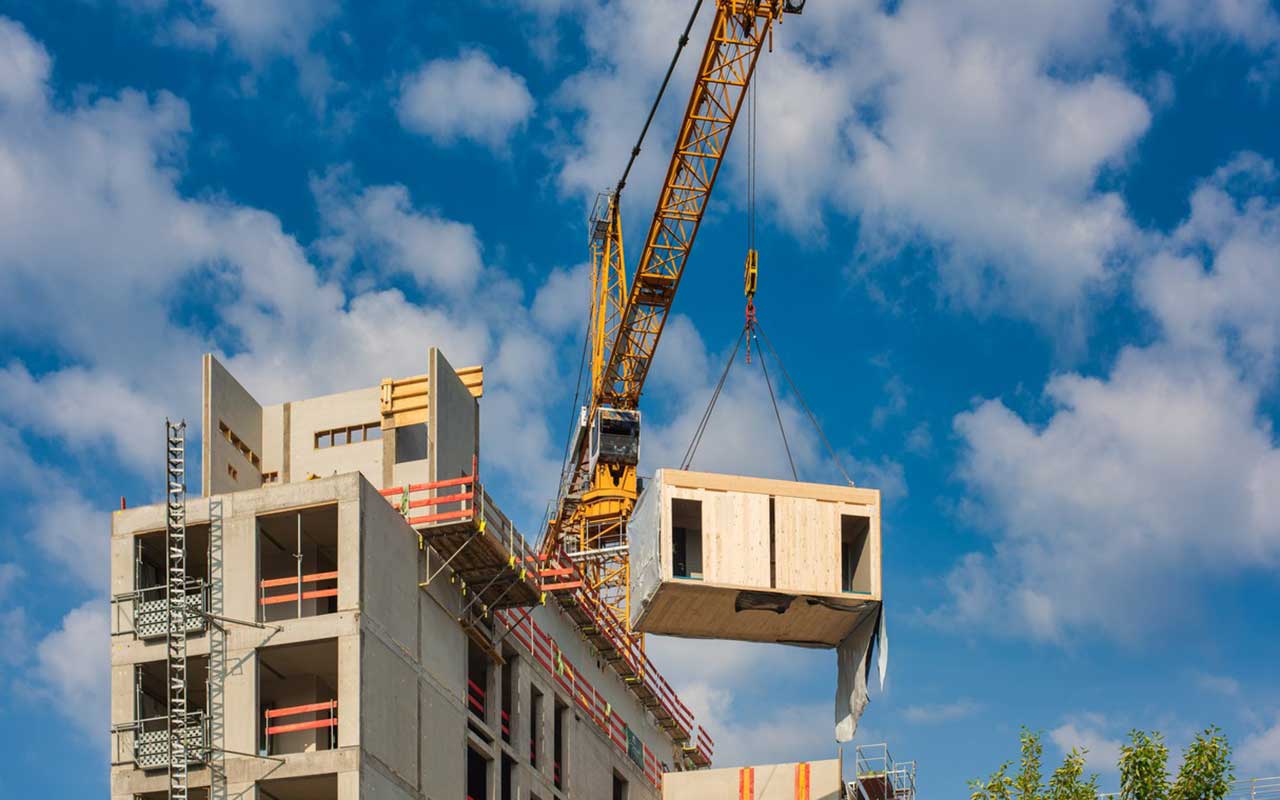The tower crane market is facing a slowdown as rising inflation and mounting contract debts continue to batter the construction industry. Operators and suppliers said project delays, unpaid contracts, surging equipment and maintenance costs have combined to stall demand, with many construction sites either operating below capacity or abandoned, CHINEDUM UWAEGBULAM reports.
Nigeria’s once-vibrant tower crane sector is slowly grinding to a halt. It is getting dragged down by a perfect storm of economic instability, ballooning interest rates, volatile exchange rates, and crippling debts owed to contractors.
Once symbols of progress on the skylines of Lagos, Abuja, and Port Harcourt, tower cranes now stand idle, dismantled, or missing entirely from construction sites where work has stalled or never began.
The situation has created a hard time for dealers and importers of construction equipment. The Guardian learnt the market in Nigeria is still underdeveloped compared to Dubai and London. For instance, the tower crane count in Lagos is about 100, while in Abuja, it’s not more than 60 cranes.
Despite the current slump, forecasts predict a steady compound yearly growth rate (CAGR) of 6–6.2 per cent through 2030, as infrastructure initiatives and urbanisation continue. Ongoing inflation, supply chain volatility, and contract indebtedness will continue driving disputes, raising financing costs, and delaying projects unless proactively managed.
According to the IMARC Group, a global management consulting firm, the global tower crane market size reached $ 7.7 billion in 2024. The firm expects the market to reach $11.4 billion by 2033, exhibiting a growth rate (CAGR) of 4.4 per cent during 2025-2033. The rapid urbanisation, construction of high-rise buildings, rising government investment in infrastructure development, and booming construction sector are primarily driving the market’s growth.
The surge in demand for prefabricated buildings to be erected on construction sites, due to the faster construction completion, is another major area that requires heavy-duty construction cranes, which is further expected to increase the demand for tower cranes.
The market is segmented by crane type lifting capacity (5T, 10T, 16T, 20T, and 25T), while the 5T and 10T lifting capacity cranes are expected to be the most used type in construction activity, due to the broad spectrum of uses these cranes can offer.
Nigeria’s tower crane market is witnessing one of its worst moments, with the economy nose-diving and top-notch projects being delayed or abandoned. At the heart of the crisis is the over N600 billion owed to members of the Federation of Construction Industry (FOCI) by federal and state governments. These debts have forced many of the country’s top construction firms to halt projects, cut jobs, and suspend payments to equipment leasing companies.
This debt primarily stemmed from unpaid certified jobs by various government entities. The situation led to a significant reduction in construction activity and widespread job losses within the industry.
The construction industry has expressed concerns about the potential collapse of companies due to the substantial debts owed by various levels of government.
This cash flow squeeze is choking the tower crane business. The large cranes, vital for vertical developments such as high-rise buildings and complex infrastructure projects, are now absent from many sites.
In the Federal Capital Territory (FCT), for instance, several large-scale housing and public infrastructure projects have stalled due to delayed payments by the FCT Administration and other federal agencies.
The problem has been made worse by aggressive monetary tightening by the Central Bank of Nigeria (CBN), which has driven the benchmark interest rate to a historic high of 27.50 per cent in a bid to combat inflation. This has made borrowing nearly impossible for contractors and developers.
Construction loans now attract interest rates of 28–30 per cent, effectively stalling new projects and drying up working capital. Leasing companies, many of which rely on bank financing to import cranes or maintain fleets, are also caught in the squeeze.
Adding to the sector’s woes is the volatility of the naira, which has seen wild swings since the government floated the currency in mid-2023. With the naira trading above N1,500/$ and constant FX fluctuations, importing new tower cranes or spare parts has become nearly impossible for local firms.
Crane prices in Naira have more than doubled, while maintenance costs have surged. Many crane leasing companies now quote rental fees in dollars to hedge against currency risk, a move that often alienates local contractors paid in naira.
Even where projects are ongoing, developers are increasingly turning to mid-rise buildings and less equipment-intensive construction methods, particularly in the residential sector. Luxury and high-rise developments that typically require tower cranes have slowed dramatically due to high costs and shifting market demand.
Chinese contractors working on government infrastructure projects, previously a steady source of crane demand, now often use their own imported equipment, bypassing local leasing companies altogether.
Some local crane firms are diversifying into other sectors, offering mobile cranes for telecom mast installation, oil and gas lifting operations, or logistics services, just to survive.
Industry players warned that unless urgent interventions are made to resolve contractor indebtedness and stabilise input prices, the crane supply chain, a key indicator of construction sector health, may face deeper disruptions in the months ahead.
They stressed that without urgent intervention, the tower crane segment may not recover in the short term. Key reforms needed include: clearing debts owed to contractors, ensuring FX access for equipment importers, and providing targeted credit support to construction and leasing firms.
A renowned equipment solution company that deals in town cranes told The Guardian that there is no tower crane market in the country, “what the country has is very insignificant.”
According to him, the kind of development that uses cranes is serious construction projects, and it portrays the low project developments.
“We used to have eight to 10 tower crane leases a year. This year, we’ve had two,” said the manager of a Lagos-based equipment leasing firm. “At 30 per cent interest, neither we nor our clients can survive.”
He urged the government to provide an enabling environment for the private sector to thrive, especially by improving the ease of doing business in the country.
“Our members are struggling to remain afloat,” a senior FOCI official said. “They can’t complete projects, service leased equipment, or pay staff because certified contracts have not been honoured for years.”
A project manager with a multinational firm in Abuja said, “The FCTA owes us billions. We had to demobilise the cranes; there’s no point keeping them on a site where nothing is moving.”
Speaking with The Guardian, President of the Commonwealth Association of Surveying and Land Economy (CASLE), Mr Joseph Ajanlekoko, revealed that the current challenges in the tower crane market stem largely from the devaluation of the naira, which has led to astronomically high replacement costs for old cranes.
“The cost of maintaining existing cranes has surged due to increased labour costs, especially for erection and dismantling and the high cost of diesel for transportation and on-site operations,” he said.
Ajanlekoko, who is also a past president of the Nigerian Institute of Quantity Surveyors (NIQS), warned that debts owed to contractors have forced many to submit inflated bids for new projects, adopt poor construction practices, and lay off workers in a desperate bid to stay afloat. This, he noted, is contributing to the growing number of building collapses, rising contractor bankruptcies, and the shutdown of several consulting firms.
“The viability of the tower crane industry is tied directly to the health of the construction sector and the broader economy. If the building industry is bleeding, as it is now, there will be fewer tower cranes. In fact, the presence of tower cranes in a city signals an economic boom,” he said.
The immediate past NIQS president, Olayemi Shonubi, also blamed the difficulties facing the industry on spiralling inflation and soaring financing costs, which have forced many real estate developers to suspend projects. “Many developers rely on a mix of equity and debt, and with borrowing costs so high, they’ve had to put projects on hold,” he said.
Despite these headwinds, Shonubi expressed optimism that the sector could rebound in the months ahead if current macroeconomic gains are sustained. He cited improved exchange rate stability and hopes for a drop in interest rates after the upcoming Monetary Policy Committee (MPC) meeting.
“If the MPC lowers interest rates, it will energise the market, and make credit more accessible to developers,” he said.
He added that the Nigerian National Petroleum Company (NNPC) Limited’s naira-for-crude oil swap arrangement with domestic refiners such as Dangote Refinery has helped ease pressure on foreign exchange demand. “With many marketers sourcing products locally, the need for dollars has dropped, which could eventually reduce the cost of imported goods like tower cranes,” he said.
Shonubi further noted that restored macroeconomic stability and rising confidence among members of the Manufacturers Association of Nigeria (MAN) would boost demand for warehouse space and positively affect the broader construction industry.






